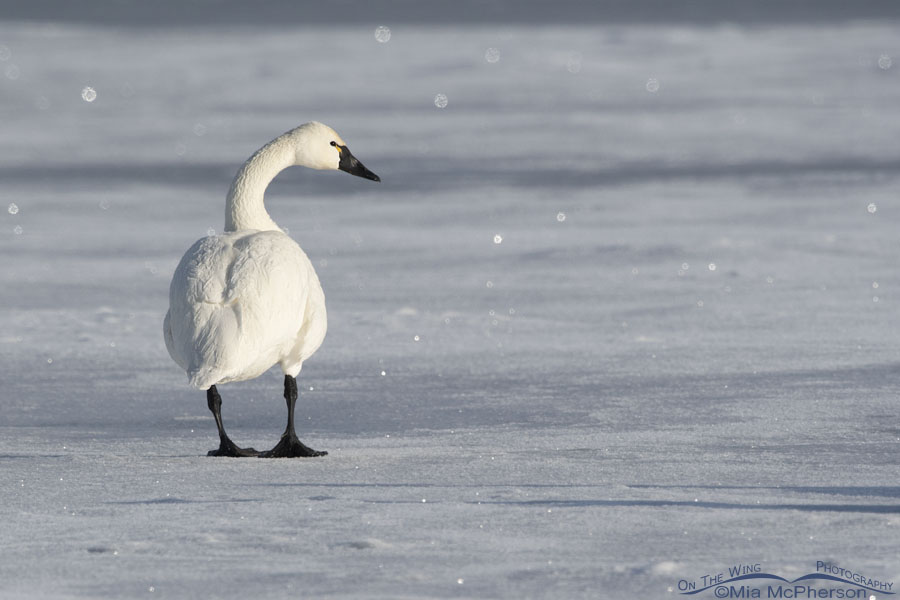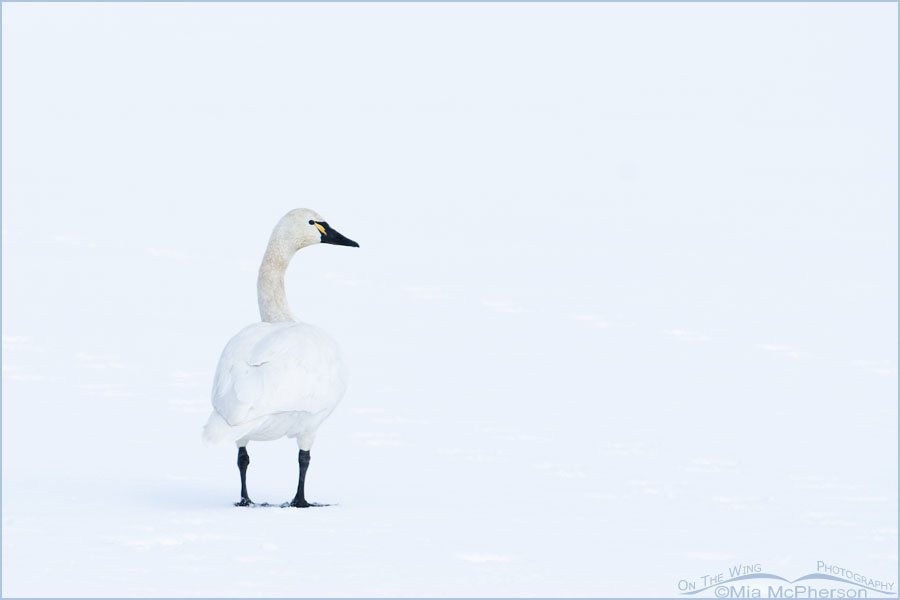Earlier this year I photographed a Tundra Swan in bright winter light that today I am comparing to another swan image I took in winter whiteout conditions.
 Tundra Swan in bright winter light – Nikon D500, f7.1, 1/2500, ISO 400, Nikkor 500mm VR with 1.4x TC, natural light
Tundra Swan in bright winter light – Nikon D500, f7.1, 1/2500, ISO 400, Nikkor 500mm VR with 1.4x TC, natural light
Both of these Tundra Swans were in similar poses with their backs turned towards me and their heads turned to the right to look at me as I photographed them. The lighting conditions when I took these images? Those were very different.
With this first photo I had wonderful bright light. Bright enough to cause specular highlights on the snow-covered ice but not too bright or contrasty.
The difficulties that present themselves in this type of light is photographing a large white bird without blowing out the white plumage. By that I mean that whites can be so white that fine details are lost when the light is too bright. Decreasing the exposure compensation setting can help with that.
With this image I didn’t need any negative exposure compensation. The histogram within my camera for this photo showed that I hadn’t blown the whites.
 Tundra Swan in a winter whiteout – Nikon D300, f7.1, 1/1600, ISO 500, +1.3 EV, Nikkor 200-400mm VR with 1.4x TC at 400mm, natural light
Tundra Swan in a winter whiteout – Nikon D300, f7.1, 1/1600, ISO 500, +1.3 EV, Nikkor 200-400mm VR with 1.4x TC at 400mm, natural light
When I took this photo in 2013 of a Tundra Swan near the causeway to Antelope Island the lighting conditions were poor. There was fog, blowing snow, and the clouds overhead caused near whiteout conditions. The swan was standing in a field of snow and it was a challenge to simply get sharp images of the bird.
For this I had to use positive exposure compensation to produce an image of a white bird in in a white field in a winter whiteout. If I hadn’t used positive exposure compensation for this photo the white bird and the snowy backdrop would have looked gray.
I’ve found that post processing for low light images can require a bit more time and skill than an image produced in brighter light. The resulting images can be quite appealing though.
Over the years that I have been photographing birds, wildlife, and nature I have learned to photograph in all kinds of light conditions. While I love the “sweet light” of early morning and late afternoons I love the challenges that less than perfect light can present. Challenges keep me on my toes.
I find both of these Tundra Swan images taken in very different light visually appealing.
Life is good.
Mia
Click here to see more of my Tundra Swan photos plus facts and information about this species.


Both shots are very cool [i.e., figuratively and literally]. But the white-out pic is astounding! Thanks Mia.
Definitely appealing. And seeing white swans always blows me away – though photographing our black ones has similar challenges.
I like both, very nice. Swans are always wonderful to find no matter the weather.